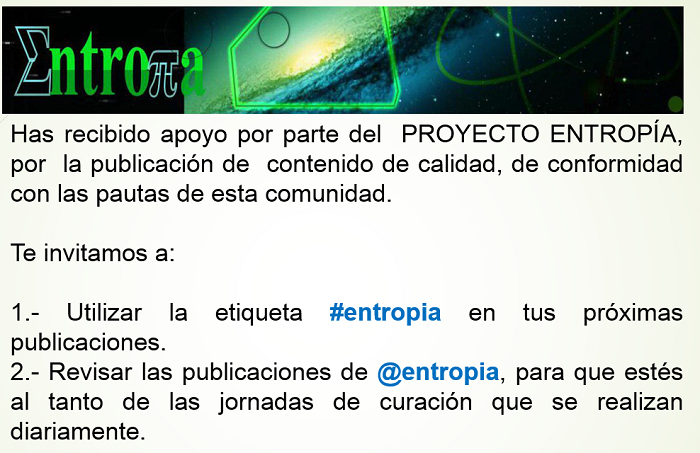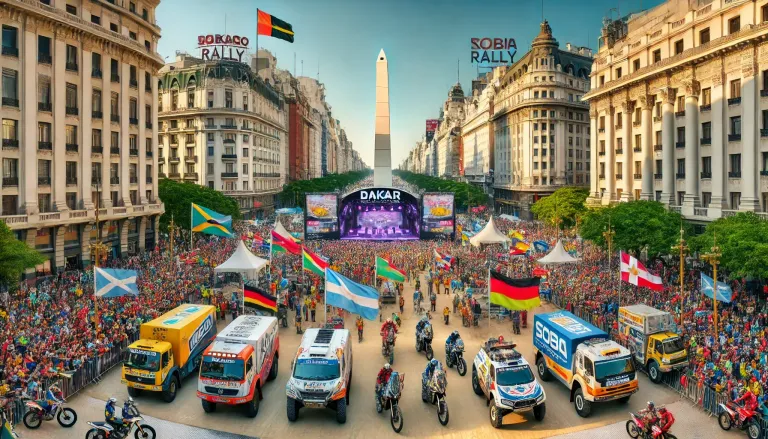
Imagen diseñada y asistida por ChatGPT
Recuerdo esa cálida mañana del primer día hábil del año 2009, probablemente porque estaba un poco malhumorado, las vacaciones estaban por comenzar y mi mente se había preparado para eso, lo que no estaba en mis planes era la visita al centro de la ciudad para solucionar un problema de trabajo en uno de mis clientes de aquellos años.
Con un poco de fortuna el supuesto problema acuciante por el que me habían hecho asistir a la oficina cuando ya debería estar a 200 kilómetros en plena ruta hacia la costa Atlántica, se solucionó rápidamente. Ya estaba despidiéndome de los pocos empleados y jefes que habían resistido la tentación de quedarse en sus casas a reponerse de las fiestas de fin de año cuando el gerente comercial me comentó que al atardecer tenía decidido acudir a la Av. 9 de Julio a ver el desfile previo y la largada simbólica de la primera carrera del Dakar que se disputaba en suelo argentino. No pude resistir la tentación de, también yo, acercarme a ver esos autos, camiones y motos que solo podía observar por TV desde mucho tiempo a esa parte. Los planes del día se habían arruinado, por qué no recuperar algo de alegría y distracción, y allí fui.
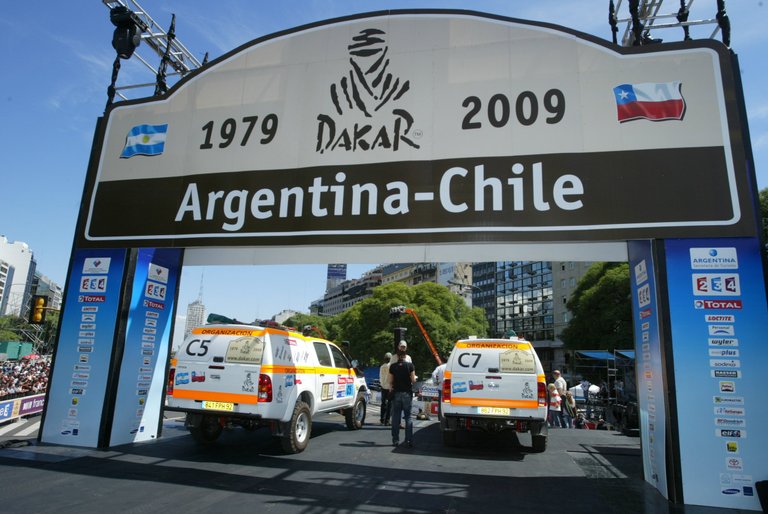
Por primera vez en la historia desde el año 1979, la tradicional y desafiante carrera París-Dakar dejaba de correrse debido principalmente a problemas de seguridad, la edición del año 2008 debió suspenderse definitivamente por las amenazas del grupo terrorista Al-Qaeda en Mauritania, los organizadores decidieron mudar los escenarios a Sudamérica. La edición 2009 se correría entre Argentina y Chile, además, se cambió la denominación de la competencia que pasó a utilizar el nombre simplificado de Dakar.
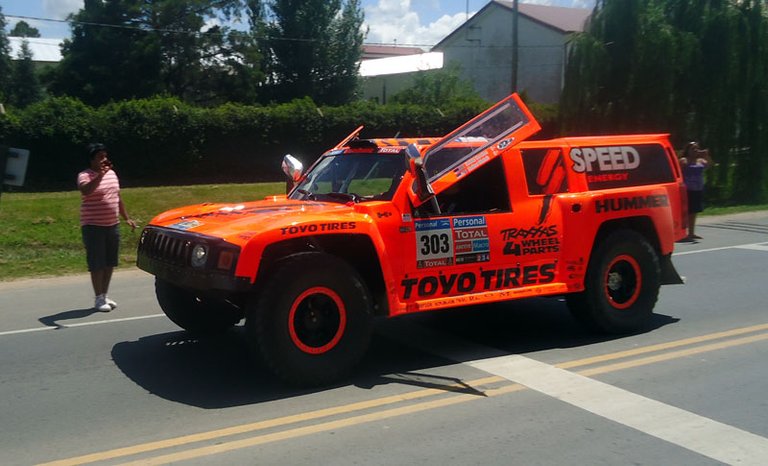
Poco tiempo atrás, David Castera, el histórico director deportivo de la prueba, mencionó que los primeros contactos para trasladar la carrera a Sudamérica se habían iniciado en 2007 y se concretó en 2009.
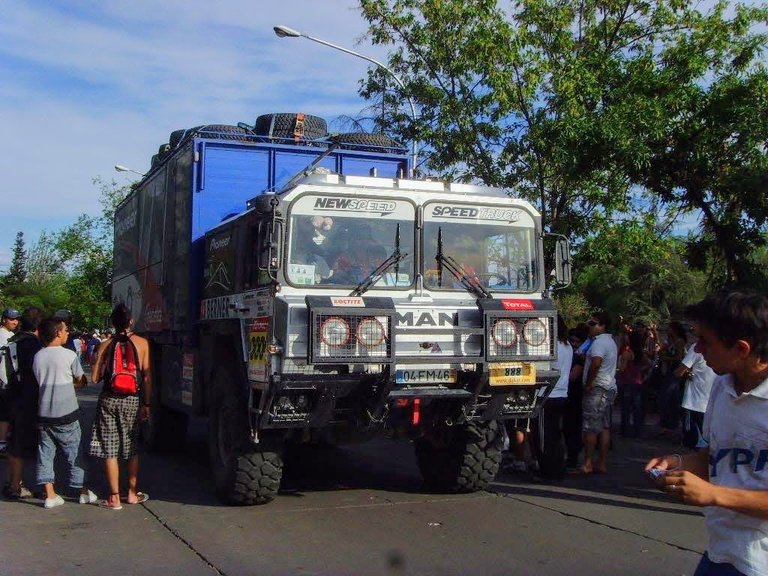
Esa tarde/noche acudí a la largada simbólica con inicio en la sociedad rural de Palermo y culminación en el obelisco, ubicado en la 9 de Julio, principal avenida de nuestra capital, una multitud que algunos estimaron en un millón de personas se congregó a lo largo del camino entre ambos puntos, jamás en todos los inicios de la mítica carrera se había juntado tanta gente deseosa de ver los bólidos más extraordinarios que jamás hubieran visto, yo entre ellos por supuesto.
Lo que más me sorprendió fueron los camiones y el estruendo de sus bocinas al ingresar a la ancha avenida, el público vivaba y agitaba banderas argentinas, las caras de los conductores y navegantes mostraban la sorpresa por el recibimiento, nunca antes y tampoco después se vivió con tanto fervor el inicio de una carrera del Dakar, no son palabras mías, las dijo el propio Castera al evocar esos 10 años que duró el rally Dakar en tierras argentinas y sudamericanas.
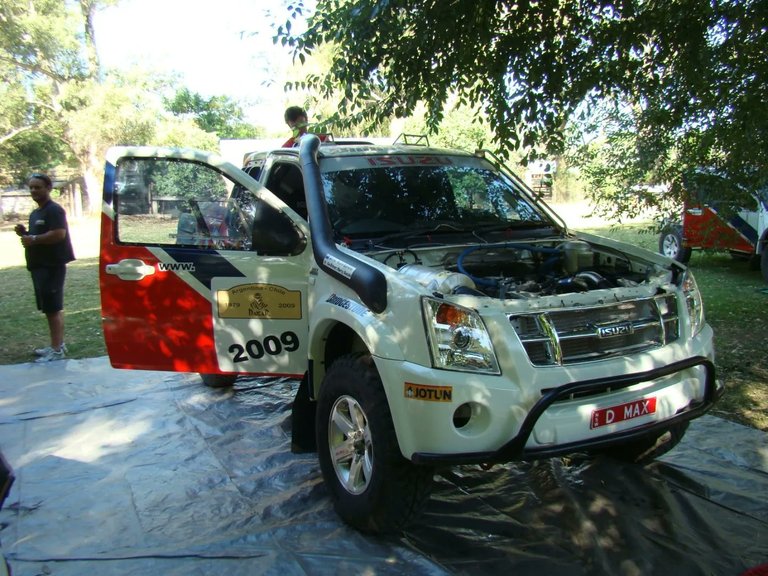
En cada etapa se juntaban miles de personas deseosas de ver pasar a esos vehículos diseñados para soportar las más duras condiciones de carrera; el regreso a Buenos Aires el 18 de enero también fue apoteósico. No estuve presente en la culminación, mi tiempo de vacacionar finalmente se había concretado.
Hubo otros varios desfiles y largadas simbólicas en Buenos Aires, solo asistí a una más unos años después de esta, pero jamás dejé de verla por televisión mientras se corrió aquí, buenas épocas, fue lindo ser testigo presencial.
Desde el año 2020 la carrera se mudó a Arabia Saudita y, como dije, solo queda parte del nombre original, ya no inicia en Europa, ya no finaliza en Africa, ya no visita América del Sur pero mantiene el espíritu del rally más desafiante y exigente del planeta.
When Dakar moved to South America
I remember that warm morning of the first working day of 2009, probably because I was a bit grumpy, the holidays were about to start and my mind had prepared for that, but what was not in my plans was the visit to the city center to solve a work problem for one of my clients from those years.
With a bit of luck, the supposedly pressing problem for which I had been called to the office when I should have been 200 kilometers away on the road to the Atlantic coast, was quickly solved. I was already saying goodbye to the few employees and bosses who had resisted the temptation to stay home to recover from the end-of-year festivities when the commercial manager told me that at dusk he had decided to go to Av. 9 de Julio to see the pre-parade and the symbolic start of the first Dakar race that was being held on Argentine soil. I could not resist the temptation to go to see those cars, trucks, and motorcycles that I could only see on TV for a long time. The day's plans had been ruined, so why not find some joy and entertainment, and off I went.
For the first time in history since 1979, the traditional and challenging Paris-Dakar race was stopped, mainly due to security problems. The 2008 edition had to be definitively suspended due to threats from the terrorist group Al-Qaeda in Mauritania, and the organizers decided to move the venues to South America. The 2009 edition would be held between Argentina and Chile, and the name of the competition was changed to the simplified name of Dakar.
A short time ago, David Castera, the historic sports director of the race, mentioned that the first contacts to move the race to South America had begun in 2007 and were finalized in 2009.
That afternoon/evening I went to the symbolic start, which began at the rural society of Palermo and ended at the obelisk, located on 9 de Julio, the main avenue of our capital. A crowd that some estimated at a million people gathered along the road between the two points. Never before in all the starts of the legendary race had so many people gathered, eager to see the most extraordinary cars they had ever seen, myself included of course.
What surprised me most were the trucks and the sound of their horns as they entered the wide avenue, the public cheered and waved Argentine flags, and the faces of the drivers and navigators showed surprise at the welcome, never before or since the start of a Dakar race been experienced with such fervor, these are not my words, they were said by Castera himself when recalling those 10 years that the Dakar rally lasted on Argentine and South American soil.
At each stage, thousands of people gathered eager to see these vehicles pass by, designed to withstand the toughest race conditions. The return to Buenos Aires on January 18 was also spectacular. I was not present at the culmination; my vacation time had finally come to an end.
There were several other parades and symbolic starts in Buenos Aires. I only attended one more a few years after this one, but I never stopped watching it on television while it was being run here. It was a good time; it was nice to be an eyewitness.
Since 2020, the race moved to Saudi Arabia and, as I said, only part of the original name remains, it no longer starts in Europe, it no longer ends in Africa, and it no longer visits South America but it maintains the spirit of the most challenging and demanding rally on the planet.
Héctor Gugliermo
@hosgug
